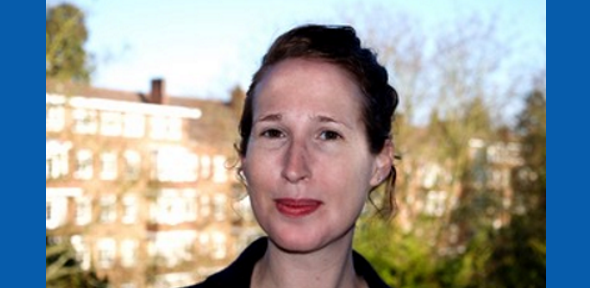
College:
Trinity Hall
Email:
am2370@cam.ac.uk
Supervisor:
Scholarships/Prizes:
Cambridge Trust Award
Research:
Sensing-through Architectural Scenographies: Tactility, Language and Natural History in the Work of Walter Benjamin
In its consideration of the work of the senses, notions of truth and language and political aesthetics in Walter Benjamin’s epistemology of images, this thesis takes as its touch-stone Benjamin’s somewhat overlooked meditations on the sensorial faculty of tactility (“das Taktische”). According to the first version of the “Work of Art” essay, along with the distinctive structures of perception of the new modes of reproduction, film and photography, architecture is the artistic domain which tactility most intimately inhabits, in which it is at home, “more originally”. The nexus between tactility, through figures of touch, and affect as the absence of intentionality informs the Benjaminian settings of “natural history”. These are scenographic sites permeated with “creaturely life” and perceived by way of melancholy and lament, as explicated in the early work on “The Origin the German Baroque Trauerspiel”.
In this constellation, the sensual realm, mediated through the allegorical mode and the more non-intentional dimensions of signification, bears deepest affinity to the linguistic grounds of philosophical representation in Benjamin’s terms. The thesis develops this argument in a set of interlinked moves and theoretical directions. Firstly, Benjamin’s conceptualisation of architecture “as more than origin” is subjected to encounter with Hegel’s account of architecture as symbolic art. In as much as tactility is more originally “in der Architektur zuhause”, this formulation also provides an intimation of the “Unzuhause”, leading to Freud’s interrelated theories of the uncanny and the articulation of the death drive, beyond the pleasure principle. Secondly, a reconstruction of Theodor W. Adorno’s reflections on “the idea of natural history” exposes the juncture between Benjamin’s and Martin Heidegger’s approaches to the “secularisation of history” and the politico-theological dimension of historicity. The spectral character of spatiality in works by Kafka and Rilke, as mediated through the philosophical writings of these thinkers, proves significant for the scenographic thinking of this polemic on the essence of historical time. The third move conceptualises the architectonics of origin and translation in Benjamin’s theory of translation. The Fall of language and the task of translating that gives itself away to translatability, is the disclosure of what this thesis takes as a persistent figure reverberating through Benjamin’s work: the towering logic of Babel.
Publications:
‘Spatiality and Temporality in Benjamin and Adorno’ in Alberto G. (ed.), Sensationalism and the Genealogy of Modernity, (Palgrave Macmillan ,2017), pp. 257-276.
“Im Taktischen”: Figures of Touch in the Work of Walter Benjamin, The Germanic Review: Literature, Culture, Theory, 93:3 (2018), 298-316. https://www.tandfonline.com/eprint/PgdyRzKWJadWDI4GbYTY/full?target=10.1080/00168890.2018.1483886
(Non-)Moving Images: Nikolaus Geyrhalter’s Homo Sapiens as a Cinema of Natural History, Transformations issue 32 (2018).
http://www.transformationsjournal.org/wp-content/uploads/2018/11/Trans32_4_messingmarcus.pdf
Spatiality and Temporality in Benjamin and Adorno, in Alberto G. (ed.), Sensationalism and the Genealogy of Modernity, (Palgrave Macmillan ,2017), pp. 257-276.
Conference Papers:
- ‘The Thought-Image and its Medium: On Walter Benjamin’s “Der Mond”’ in “Walter Benjamin and Method: Re-thinking the Legacy of the Frankfurt School”, International Walter Benjamin Conference, University of Oxford, September 2017.
- ‘“An Ear for Lament”: Walter Benjamin and Gershom Scholem on Language and Ruination’ in “Re-Thinking the Book of Job: Das Buch Hiob im biblischen Kontext und in Interpretationen des 20. Jhds.”, FU Berlin, July 2017.
- ‘The Cinema of Natural History: On Nikolaus Geyrhalter’s ‘Homo Sapiens’’, in ‘Aesthetics and Politic’ Department of German and Dutch, University of Cambridge, May 2017.
- ‘The Image as a Scene of Deformation between Speaking and Seeing: on Walter Benjamin’s Fragment ‘Phantasie’’ in ‘Epiphanic Realities Languages of Things in Literature and the Arts’, the Trilateral Colloquium Berlin-Cambridge-Chicago, Berlin, February 2017.
- ‘Ruination of Time, Sites of Ruins: Temporality and spatiality in Adorno’s “The Idea of Natural History”’ in Cambridge AHRC DTP Conference on ‘Time and Temporality’, September 2016.
- ‘"Durchspüren von Strukturen”: Architecture as “Medium of Untimeliness' in the Work of Benjamin’ in ‘The Untimeliness of Media’, Graduate conference organised by the Department of Germanic Languages and Literatures at the University of Pennsylvania, Philadelphia PA, USA, February 2016.
- ‘Economic Subjects, Economic Bodies: On Walter Benjamin’s Sketch “Capitalism as Religion”’, in ‘Economic Subjects, Trilateral Doctoral Colloquium Berlin–Cambridge–Chicago, July 2018, Cambridge.
- ‘The Cinema of Natural History: On Nikolaus Geyrhalter’s ‘Homo Sapiens’’, in ‘Aesthetics and Politic’ Department of German and Dutch, University of Cambridge, May 2017.
- ‘The Image as a Scene of Deformation between Speaking and Seeing: on Walter Benjamin’s Fragment ‘Phantasie’’ in ‘Epiphanic Realities Languages of Things in Literature and the Arts’, the Trilateral Colloquium Berlin-Cambridge-Chicago, Berlin, February 2017.
- ‘Ruination of Time, Sites of Ruins: Temporality and spatiality in Adorno’s “The Idea of Natural History”’ in Cambridge AHRC DTP Conference on ‘Time and Temporality’, September 2016.
- ‘“Durchspüren von Strukturen”: Architecture as “Medium of Untimeliness” in the Work of Benjamin’ in ‘The Untimeliness of Media’, Graduate conference organised by the Department of Germanic Languages and Literatures at the University of Pennsylvania, Philadelphia PA, USA, February 2016.


